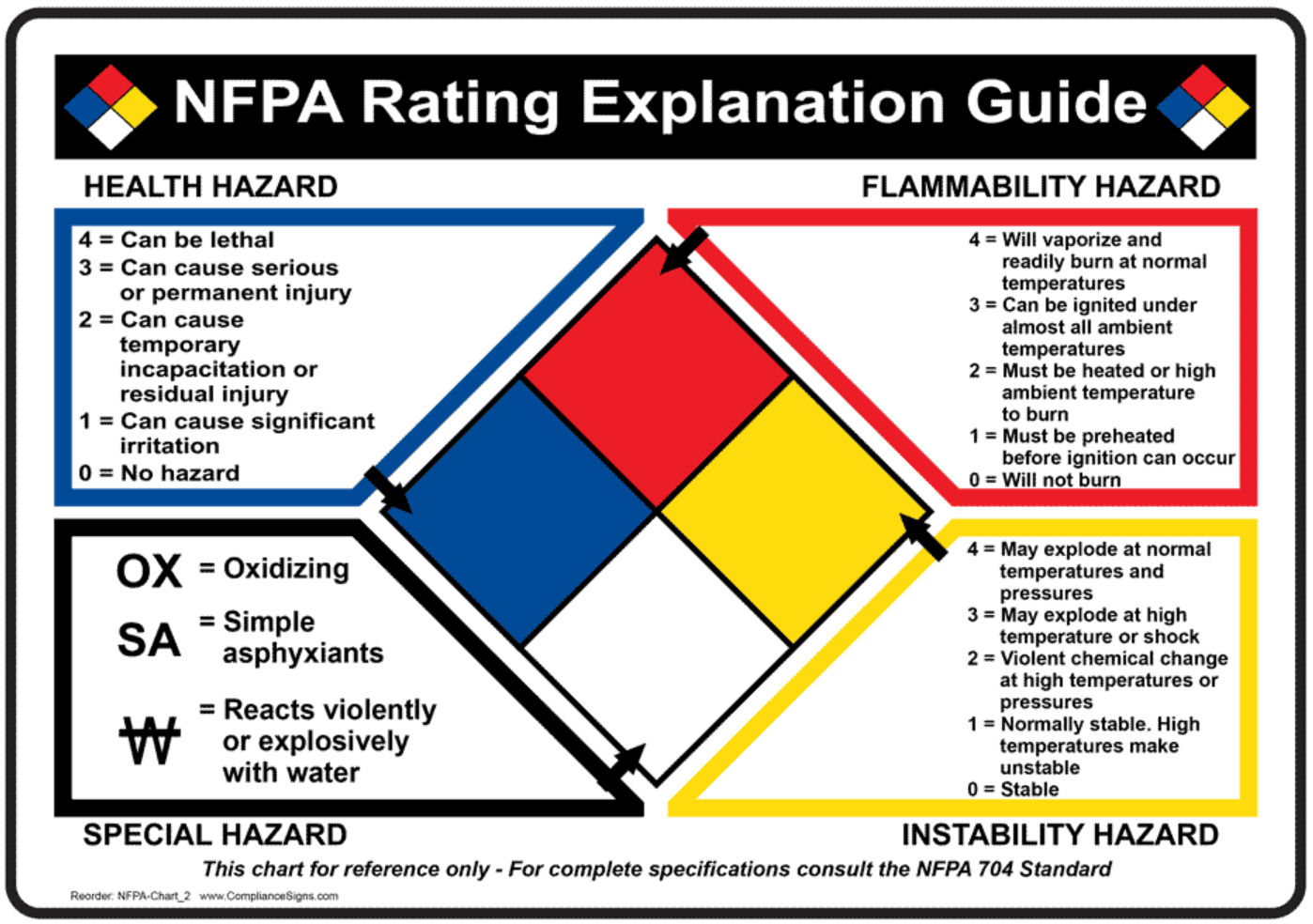NFPA Hazard Diamond
What is the NFPA Hazard Diamond?
The NFPA 704 Diamond, commonly referred to as the NFPA Hazard Diamond, provides a system for identifying the specific hazards of a material and the severity of the hazard that would occur during an emergency response. The system addresses the health, flammability, instability, and special hazards presented from short-term, acute exposures that could occur as a result of a fire, spill, or similar emergency.
Where should I post the NFPA Hazard Diamond, and how many should be used?
The placard should be visible in case of an emergency where responders are likely to enter. If there are several entrances to the facility, there should be a placard at each entrance. The placard should be posted on the two exterior walls of a facility or building, each access to a room or area, or each principal means of access to an exterior storage area.
What information on the SDS/MSDS is used to rate hazardous materials?
The following sections can be reviewed to determine the ratings:
- Health: Sections 2, 4, 8, 9, 11
- Flammability: Sections 2, 3, 9
- Instability: Sections 5, 7, 10
- Special Hazards: Sections 5, 9, 10, 11
Note: The Section 2 Hazard Category of the SDS/MSDS is NOT the hazard rating that should be placed on the Hazard Diamond labels.
How do OSHA's Hazard Communication Classification Numbers differ from NFPA 704 Ratings?
The OSHA's Hazard Communication standard and the NFPA 704 standard were designed differently, however both systems use numbers which can lead to confusion. The NFPA 704 is used primarily by fire and emergency responders / safety personnel to quickly gather information regarding the hazards present.
The OSHA classification methods put hazards into categories for labeling and training. The Hazard Communication classification is inverse to the NFPA 704 in that 1 is the most hazardous and 4 is the least hazardous rating.
How is the rating displayed?
The system is displayed as a rotated square shape, broken up into 4 sub squares. The material hazard is described within each of the 4 sub squares as the degree of severity, degree of flammability, and degree of instability with health at the 9 o'clock position, flammability at 12 o'clock position, and instability at 3 o'clock position. Colors are used to further distinguish the hazards, with red referring to flammability, blue referring to health, and yellow referring to instability. Severity is indicated by a numerical rating that ranges from 0 (as the minimal hazard) to 4 (as a severe hazard). The 6 o'clock position on the symbol represents special hazards and has a white background. The special hazards are taken from three possibilities: W indicates unusual reactivity with water, OX indicates an oxidizer, and SA indicates an asphyxiant gas.
